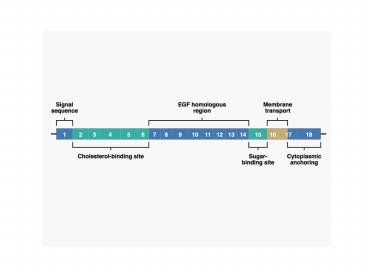DNA Replication - PowerPoint PPT Presentation
1 / 27
Title:
DNA Replication
Description:
Other Ways of Classifying or Thinking About Mutations. germline vs somatic ... carcinogens and teratogenic agents. The Ames Test is therefore ... – PowerPoint PPT presentation
Number of Views:71
Avg rating:3.0/5.0
Title: DNA Replication
1
(No Transcript)
2
DNA Replication errors insults
Mispairing, Damage Repair
Systems MUTATIONS
Repaired DNA
3
(No Transcript)
4
(No Transcript)
5
(No Transcript)
6
(No Transcript)
7
Other Ways of Classifying or Thinking About
Mutations germline vs somatic
spontaneous vs induced conditional
(permissive vs nonpermissive conditions) point
mutations vs deletions, insertions, inversions,
etc. forward vs back mutations (back
mutations include reversions and true reverse
mutations)
8
Mutations at the molecular level
9
(No Transcript)
10
(No Transcript)
11
(No Transcript)
12
(No Transcript)
13
(No Transcript)
14
(No Transcript)
15
(No Transcript)
16
DNA Replication errors insults
Mispairing, Damage Repair
Systems MUTATIONS
Repaired DNA
17
(No Transcript)
18
(No Transcript)
19
Xeroderma pigmentosum is an inherited defect in
DNA repair, partiularly of UV-induced damage.
(This is a very good reason for worrying about
depletion of the ozone layer)
20
(No Transcript)
21
(No Transcript)
22
The Ames Test is the most widely used method of
detecting chemical mutagens. It is based on
His revertants in the bacterium Salmonella.
His- His (his- sup- his-
sup) This reversion rate is easily measured
(how..?). An increase in the rate of
reversion is evidence that a particular
substance has mutagenic properties. Note
There is a good general correlation among
mutagens, carcinogens and teratogenic agents.
The Ames Test is therefore the first line of
detection/defense for all of these .
23
(No Transcript)
24
A significant fraction (far more than first
thought) of of the genomes of eukaryotes is
composed of, or is descended from, sequences
which can change position. Most eukaryote
genomes contain several families of
transposable elements.
25
(No Transcript)
26
(No Transcript)
27
(No Transcript)































